Footage reveals dismantling of Nakagin Capsule Tower in Tokyo
This exclusive video footage by Dezeen shows the demolition and dismantling of Kisho Kurokawa's metabolism Nakagin Capsule Tower in Tokyo.
The dismantling of the iconic Nakagin Capsule Tower, which was designed by Japanese architect Kisho Kurokawa, comes after the building fell into disrepair.
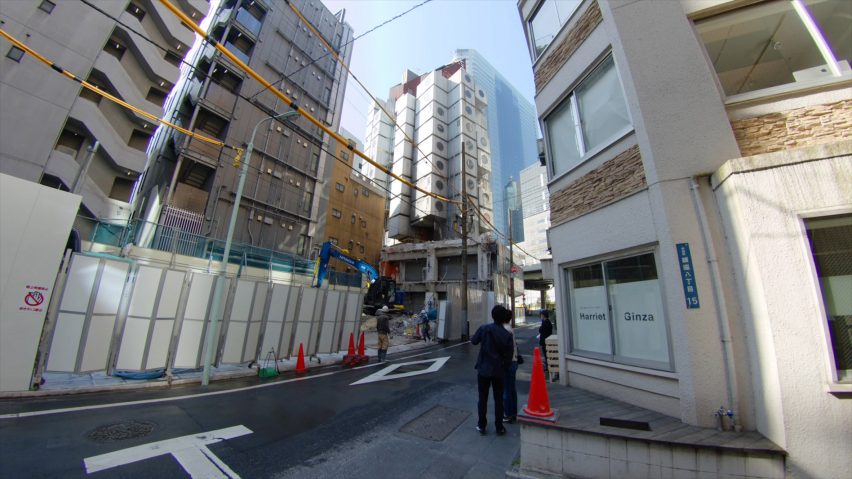
Built in 1972 in the Ginza neighbourhood of Tokyo, the Nakagin Capsule Tower is one of few the remaining examples of metabolism architecture – a post-war architectural movement that began in the 1960s.
Video footage shot by Dezeen shows the building surrounded by metal scaffolding and construction workers starting to dismantle the prefabricated capsules.
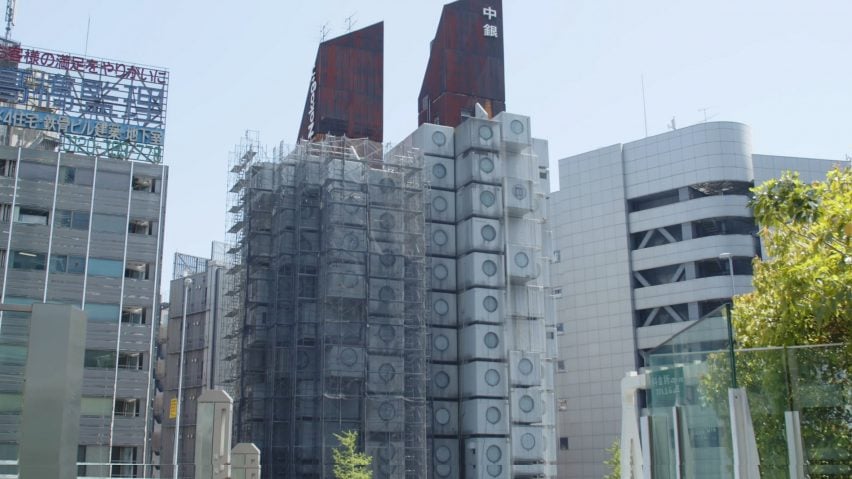
Construction workers are recorded installing soundproof panelling to cover the exterior of the building.
A preservation group named Nakagin Capsule Tower A606 Project, which is formed by former residents, is salvaging the original parts of Capsule A606. The video also shows members of its team carefully removing the tower's iconic circular windows and built-in furniture and bathroom units from the capsule's interior .
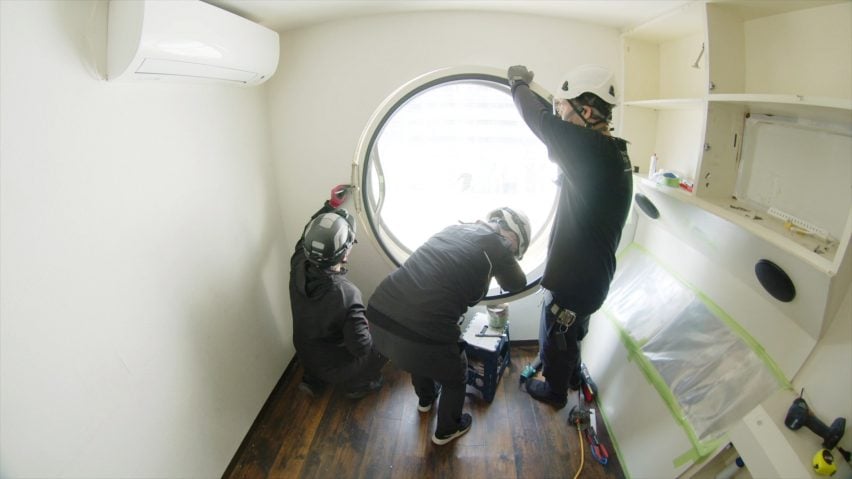
The Nakagin Capsule Tower was formed of two interconnected concrete towers of 11 and 13 storeys. Attached to the adjoining towers, 140 prefabricated steel modules were fixed onto the exterior of the concrete shafts.
The prefabricated units each measure 2.5 by four metres and can be characterised by the cubic form and a distinctive circular window.
Protests, fundraisers and petitions aimed to save the tower and implement building protection status since talks of demolition first arose in 2006.
The concept for the building involved the tower's individual capsules being repaired or replaced every 25 years, however, a lack of funding meant the capsules were never repaired and began to deteriorate.
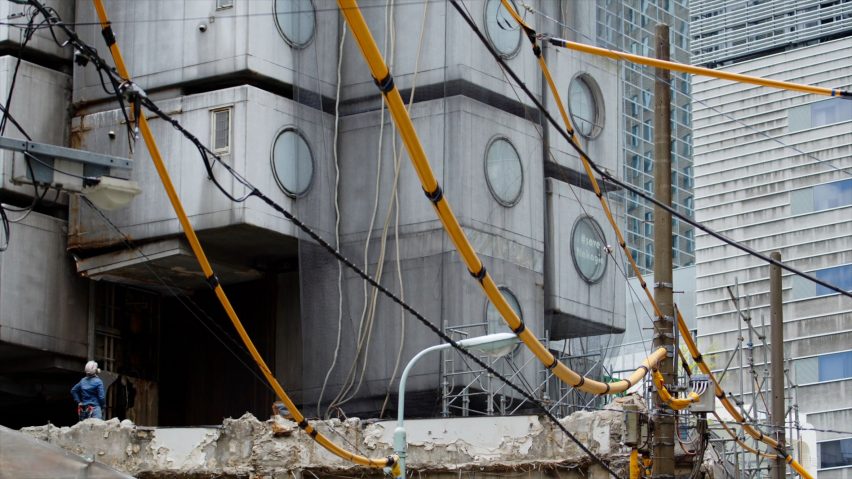
Plans to disassemble the tower were confirmed in 2021, which led to its residents crowdfunding to preserve, donate or relocate the residential capsules.
Nakagin Capsule Tower A606 Project is among the groups that has retained one of the modules, which will be restored and exhibited by the group.
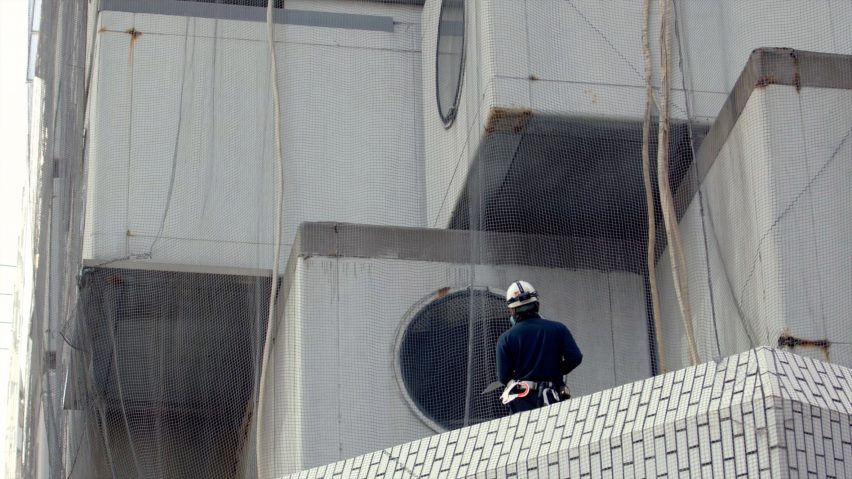
Across the world, iconic modernist and brutalist 20th-century buildings are being increasingly demolished.
In early 2022, Marcel Breuer's Geller I house in Long Island, which was noted as one of Breuer's first US homes, was demolished overnight to make way for a tennis court.
In Scotland, North Lanarkshire Council announced that a brutalist 1960s concrete megastructure named The Centre Cumbernauld was set to be demolished and replaced.